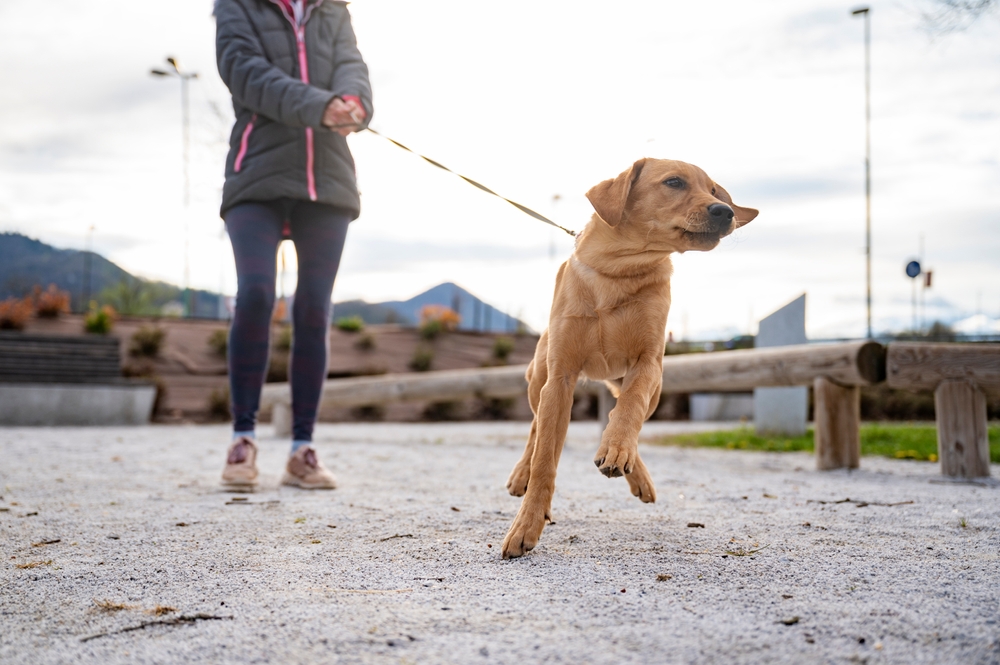Walking your dog is meant to be a fun and relaxing activity, but when your dog constantly pulls on the leash, it can turn into a stressful experience. Fortunately, using positive reinforcement techniques can help teach your dog to walk politely on a loose leash. This approach focuses on rewarding good behavior rather than punishing bad behavior, fostering a positive and cooperative relationship between you and your dog.
Why Dogs Pull on the Leash
Dogs pull for a variety of reasons—excitement, curiosity, or simply because they haven’t yet learned how to walk politely on a leash. For many dogs, pulling is an instinctive behavior, reinforced by the fact that when they pull, they often get to where they want to go faster. This is why it’s so important to teach your dog that walking on a loose leash is the behavior that gets rewarded.
The Power of Positive Reinforcement
Positive reinforcement involves rewarding your dog for good behavior to encourage them to repeat it. Instead of correcting your dog for pulling, you focus on what you want them to do—walk calmly by your side. This technique not only teaches your dog leash manners but also strengthens your bond by making walks more enjoyable for both of you.
Key Techniques for Loose Leash Walking
1. Reward Attention and Focus
One of the most important aspects of teaching your dog to walk on a loose leash is keeping their attention on you. Use high-value treats or toys to reward your dog whenever they check in with you or look at you during a walk. By reinforcing this behavior, you’re teaching your dog that paying attention to you is rewarding.
2. Reinforce Loose Leash Behavior
Anytime your dog walks without pulling, reward them. Timing is crucial—mark the exact moment they’re walking politely by your side with a verbal cue like “yes” or using a clicker, and follow up with a treat. Over time, your dog will learn that staying close to you and not pulling on the leash earns rewards.
3. Stop and Redirect Pulling
When your dog starts to pull, don’t yank them back or punish them. Instead, stop walking and wait for them to return to your side. You can also use an attention cue, like calling their name or asking them to look at you. Once they refocus on you and the leash is loose again, reward them and resume walking. This teaches your dog that pulling doesn’t get them where they want to go, but walking calmly beside you does.
4. Use the Right Tools
While training, it can be helpful to use a front-clip harness or other gentle walking tools designed to reduce pulling without causing discomfort. Avoid choke chains or prong collars, as these can cause pain and anxiety, which can hinder the learning process.
Patience and Consistency
Like any training, teaching loose leash walking requires patience and consistency. Progress may be slow at first, especially if your dog has a long history of pulling. However, with positive reinforcement, your dog will eventually learn that walking politely on the leash is rewarding. Short, frequent training sessions are often more effective than long, overwhelming walks, especially in the early stages.
The Benefits of Positive Reinforcement Training
Using positive reinforcement not only helps you achieve better leash manners, but it also strengthens your overall relationship with your dog. Training becomes a fun, rewarding experience that builds trust and understanding. It encourages your dog to want to work with you rather than against you, creating a more cooperative and harmonious dynamic.
Final Thoughts
Leash pulling is a common issue, but with the right approach, it can be effectively managed and corrected. By using positive reinforcement techniques, you can teach your dog that walking on a loose leash is rewarding and enjoyable. Patience, consistency, and kindness will go a long way in ensuring that walks become a pleasant and relaxing experience for both you and your furry friend.


